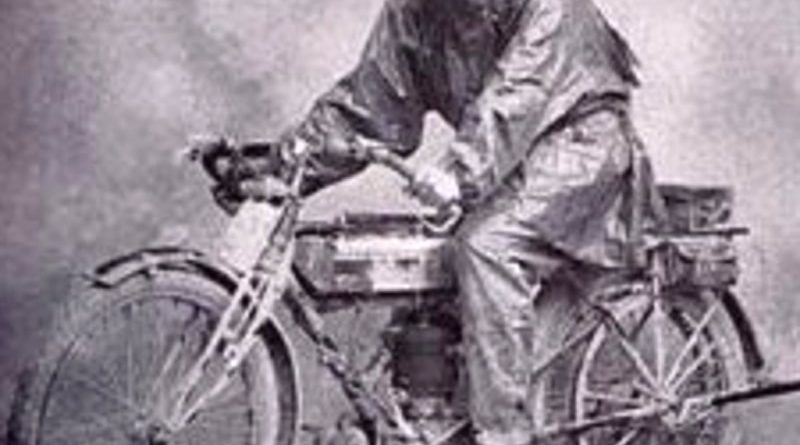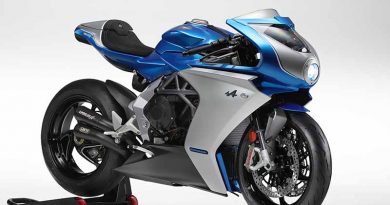Moto Guzzi California: The Bike that Broke Harley-Davidson’s Stranglehold
The Moto Guzzi ‘California’ traces its roots back over half a century. Find a decent 20-year old example of the Italian bagger, and you’ve got a practical bargain.
There must be something in the water in Northern Italy. How many locations in the world can boast such a concentration of iconic car and motorcycle manufacturers in one geographical area?
Lamborghini, Ferrari, Maserati, Ducati, MV Agusta, and Moto Guzzi all built their colossal reputations within the golden triangle of Italy’s industrial north.
Moto Guzzi is a niche manufacturer. As with all V-twins, it attracts a certain kind of motorcycle rider. Once bitten by the Guzzi bug, though, it’s game over when it comes to other brands.
Apart from seeing the occasional launch model in the motorcycle press, such as the newly updated adventure bike the V85TT, Moto Guzzi may, to some, be a bit of a mystery.
Here, we’ll rectify this with the fascinating backstory of this motorcycle manufacturer, then look at one of the most iconic models, the Moto Guzzi California.
The History of Moto Guzzi
Celebrating 100 years of continuous production in 2021, the history of Moto Guzzi is a story of tragedy, adventure, and innovation. Towards the end of WWI, military pilots Giorgio Parodi and Giovanni Ravelli along with crew mechanic Carlo Guzzi dreamt of a better future. They longed for an end to the war so that they could build motorcycles.
Giovanni Ravelli. Photo: Moto Guzzi Archive
The trio formed a dream team. Guzzi would handle the engineering, while Parodi’s wealthy family would bankroll the project and Ravelli, would race and promote the finished product.
On August 11, 1919, shortly after the war ended, Ravelli died tragically during a test flight. The company’s famous eagle in flight logo based on the Italian Air Force emblem was designed in his memory. The eagle’s outstretched wings have graced the tank of every Moto Guzzi since.
Continuing with the original duo, plus Parodi’s father Emanuele, Moto Guzzi produced their first motorcycle, the 8hp Normale, in 1921. That same year, Guzzi took their first race victory, starting a motorsport heritage spanning over 40 years.
Apart from innumerable race wins, the company’s trophy cabinet includes 14 world championships and 11 Isle of Man TT victories.
The centerpiece of this article is the legendary Moto Guzzi California. Before we launch into its model history though, let’s not forget what Moto Guzzi has, over the years, brought to the table. Some of the factory’s technical innovations changed the motorcycle industry forever.
Moto Guzzi Model Overview
Model
Year
Features
750cc V7
1969
The V7 Police Special, the Harley beating bagger
V7 Civilian
1971
Civilian model is called the Eldorado in the US
850 California
1972
The first of its name, a practical grand tour bagger, with screen, hard cases and floorboards
California MkII
1981
Bored out to 948cc and comes with a 5 speed box
California MkIII
1987
Same engine and gearbox, cosmetic changes to bodywork, seat and luggage
California 1100 EV
1993
Increase in cc and hp, last of the carb models
California 1100 EV Special
1999
Change to EFI and the start of the specials like the Cali Jackal, Classic, Sport and Stone
Swinging Arm Suspension
In the early 20th century, motorcycles were little more than motorized bicycles. However, in the late 1920s, Carlo Guzzi and his brother Giuseppe designed the first swinging arm suspension. The design was incorporated into their Grand Turismo 500 model as a test vehicle.
Giuseppe Guzzi with the Norge GT500. Photo: Moto Guzzi Archive
In 1928, in a quest to prove the suspension’s worth, the brothers set out on a 6,400km journey. It took them from the factory in Mandello del Lario, Italy, to Norway’s Northern Cape.
The rural roads in this era were little more than dirt tracks. But despite terrible conditions and appalling weather, Giuseppe Guzzi made it to the Arctic Circle in an impressive 28 days.
1928 Moto Guzzi 500CC GT Norge. Photo: Bonhams
Using almost 200 liters of gas and needing three tires, the Moto Guzzi’s revolutionary rear suspension was hailed a resounding success. The design was promptly fitted to production bikes and renamed the Norge GT 500 to commemorate the event.
The Center Stand
The center stand is yet another Guzzi first and a godsend to every biker who has ever suffered a flat tire.
Linked Braking System
Moto Guzzi was the first motorcycle manufacturer to design a linked braking system fitted to their 1975 850cc T3 California.
Automatic Transmission
The 1975 Moto Guzzi V1000 Convert boasted the company’s linked braking system and the first auto-box in a large-capacity motorcycle.
CARC – Compact Reactive Drive Shaft
My first experience of ‘shaft jacking’ came courtesy of riding a warmed-up BMW R90 around the Isle of Man TT course. The fact that I can still remember the experience speaks volumes.
Shaft jacking occurs due to the torque reaction of the shaft as the rider blips the throttle. This action causes the bike to perform unwanted gymnastics.
Moto Guzzi designed the first ant-jacking system, fitting it to the exquisite 1993 1000cc Daytona café racer.
Motorcycle Wind Tunnel
British engineer Frank Wenham invented the wind tunnel in 1871. Yet, it was 80 years later before someone thought to build one for motorcycles.
In 1950 Moto Guzzi built the first motorcycle-specific wind tunnel, which allowed them to leap years ahead in aerodynamic fairing design. Moto Guzzi’s enormous wind tunnel-designed dustbin fairings became legendary on Europe’s Grand Prix circuits.
First DOHC V8 Motorcycle Engine
Keith Campbell on the Moto Guzzi V8. Photo: Moto Guzzi Archive
Moto Guzzi dominated European racing for eight successful years (1949-57) with their 250cc and 350cc singles. Not content with this, chief engineer Giulio Carcano went to the opposite extreme, designing a V8 engine for their works racers to play with.
The 500cc 8-cylinder monster competed for just two years (1956 and ‘57) but almost didn’t race at all, thanks to team manager Fergus Anderson. Anderson pulled- rank demanding the first ride on the beast. He crashed on his first lap and destroyed the engine.
Revving to 16,000rpm, the beautifully complicated V8 broke many lap records. And in its final race, set a speed record of 286kph. But what is even more impressive than the engine itself is that it was conceived, designed, and built-in only 150 days!
The Moto Guzzi ‘California’
Amongst Moto Guzzi’s iconic models, the California stands out from the crowd as a groundbreaker. And it’s all thanks to the ‘Goose Patrol’.
Late in the 1960s, Guzzi launched their first 90-degree big twin, the V7. The bike was a hit in Europe, but the untapped US represented a vast market for laid-back big-bore V-twins.
Before the end of the decade, the Berliner Motor Corporation (BMC) became the official Moto Guzzi importer to the USA, as well as Ducati and several British makes. With a sharp eye for business, BMC wasted no time trying to break into the lucrative police department fleet market.
Ducati, Triumph, and Norton had already tried and failed. Finally, in 1967 BMC approached the Los Angeles Police Department (LAPD) with an offer they couldn’t refuse. They would build them a motorcycle to test, built to their exact specification. This bike was based on the Moto Guzzi V7.
Getting the LAPD to agree to the trial was the easy part. BMC then had to overcome laws that prevented government departments from purchasing foreign vehicles.
The Ultimate Buyer’s Guide For Motorcycle Gear:
Best Motorcycle Backpacks
Coolest Motorcycle Aviator Goggles
Motorcycle Ankle Boots
GUIDE: Gear For A Motorcycle Roadtrip
Top-10 Retro Motorcycle Gloves
Best Black Leather Jackets
Carbon Fiber Open Face Helmets
Breaking the Shovelhead Stranglehold
In addition, Harley-Davidson had a stranglehold on police fleet sales. The specification for rivals to adhere to was more or less a ‘Shovelhead’ operator’s manual.
The list of changes needed to hit the spec were innumerable, and so LAPD Traffic Enforcement Officer George’ Scotty’ Henderson was sent to the factory in Italy to liaise. He reported back, saying, “They literally designed and built the bike right before my eyes.”
The summer of 1969 saw ten 750cc police spec Moto Guzzi’s being delivered to the LAPD. Not all motorcycle cops were happy with some H-D diehards mispronouncing the name as ‘Moto Goosey.’
From that moment on, the test fleet was christened the ‘Goose Patrol.’ Fortunately, the Guzzis ran circles around the slow, ponderous Shovels. Feedback was positive, and the city ordered a large fleet of V7 Police Specials.
One of the Goose Patrol putting the V7 through its paces. Photo: Moto Guzzi Archive
To take advantage of the publicity, Guzzi launched the 750cc Ambassador civilian version, which ‘Cycle World’ magazine road tested in 1970 to rave reviews.
By early 1971, law enforcement across the USA were paying attention. After several tweaks, the civilian version of the Police Special was launched, the Moto Guzzi California.
All Guzzi had to do was dump the sirens, swap the bulletproof screen for a Lexan version and add a buddy seat. George ‘Scotty’ Henderson and the men of LAPD’s ‘Goose Patrol’ had created a gran turismo model for the street.
The big touring Guzzi known as the ‘Ambassador’ in the States, to the rest of the world became the California, and in Europe, sales were brisk.
Traveling Far and Fast
In the spring of 1979, my friend’s older brother rode up on a brand new T3 California. He parked it amongst our ratty assortment of British iron. Its linked triple discs, shaft drive, huge buckhorn bars, and black and white paint job were a total conversation stopper.
He regaled us with tales of his ‘weekend’ trip to France, a journey that would have taken a week on my Triumph T120 and left me in need of a chiropractor. At that moment, I realized that if I ever wanted to travel far and fast, the California was the way to go.
Today, late 70’s T3 California’s in a good state of restoration are fetching a solid price tag, anywhere between 7-10K Euros. While an excellent bike for lazy weekend rides, the price has more to do with it being the first California off the production line than its technical specifications.
Moto Guzzi 850 T3 California, 850 ccm. Photo: Dba.dk
The bargains you can find in the Cali line come a little later with the California MkII, MkIII, and EV range. From the early ’80s to 2002, there are many model variants to choose from, and comparatively large numbers are available.
But what is it that makes the California, built between these years, a good buy? First off, the MkII launched in 1982 has none of the first edition pressure attached. Second, although rooted in the vintage category, prices remain sane.
Secondly, and perhaps more importantly, the MkII got the bigger 1000cc square fin engine and a more robust frame with a longer swinging arm. A large motorcycle already, the new frame added to its street presence and general load-carrying ability.
By the time the MkIII made an appearance in 1987, several variations were available based on the stripped-down ‘Classic’ and the full dresser ‘CI.’
Earlier models are fitted with small or medium valve engines with carbs, while later versions get EFI. In all its variations, the ‘California’ was Guzzi’s bestseller for almost a decade.
Lowdown Grunt
The next update came in the mid-’90s in the shape of the California 1100. The bump in engine size didn’t release any more power, but the revamp gave extra low and mid-range grunt.
Moto Guzzi California 1100EV 97. Photo: www.motorcyclespecs.co.za
Finally, the California ditched its 18ins rear bicycle wheel in favor of a wider 17ins version receiving further frame strengthening and suspension tweaks in the process.
At this time, Moto Guzzi gave the model range a much-needed update in the electrical and finish departments. Two factors which were responsible earlier for giving the bike a bad reputation.
By 1997, the California had transformed into the 1100EV. These models, built from 1997-2002, may well represent the best value for money.
Purchase a Guzzi California 1100EV from this period, and you will tap into the heritage of the third oldest motorcycle manufacturer in the world. Better yet; despite being around 20 years old, you will be buying a motorcycle that is still capable of a grand tour, two-up with luggage and all without missing a beat.
Speed is an Illusion
With around 70hp at the back wheel, the low torque curve may make the engine look lazy on paper, but it’s an illusion. Instead, the Magneti Marelli fuel injection gives the bike a perky feel.
Add to this its nimble and surefooted Italian handling and a brake system that can teach modern bikes a thing or two, and you’ve got a reasonably priced and capable grand tourer. Comparisons to an equivalent year, 100kg heavier Road King would be obvious, but albeit unfair to the Harley.
Apart from a range of ‘California variants sporting different equipment, finish, and wheel options, it’s during this period we see the stripped-down bad-ass Jackal and Stone variants.
I realize that it may sound counterproductive to consider a touring motorcycle without touring gear, but both models offer fantastic value for money. Add a pair of throw-over panniers and an aftermarket screen, and you’ve got your own personal California variant.
In terms of competition, comparisons are trickier than usual due to the Guzzi’s unique engine layout and power delivery. So we need to look at what big V-twins were around at the start of the millennium.
Ducati S4 – A slightly faster and sharper handling contender, but its full fairing and sporty engine place it firmly in the sport-touring category.
Honda Shadow/Suzuki Intruder/Yamaha V Star/Kawasaki Vulcan – All these motorcycles are reliable V-twin workhorses and make reasonable if wallowy tourers. Unfortunately, they also suffer from H-D clone syndrome giving none of the solid individual Cali vibe.
Harley-Davidson Road King – Perhaps this bike is the California’s closest rival. Having owned a ’96 Evolution version and been besotted with it, I would say the Evo has the edge.
Yet compare the Guzzi to the equivalent year Harley-Davidson’ Road King’ fitted with the Twin Cam A engine, and it’s a whole other story. With its self-destructing cam chain/tensioners lasting less than 20,000 miles, the over-engineered low maintenance ‘‘California’ nudges’ back in front.
Add to this the much lower purchase price (around half the cost) of same year models, and the Moto Guzzi is a clear winner.
Acquired Taste
Not all V-twins are created equal. The majority of Japanese variants are big, softly sprung, and easy to own. They need little owner input to keep them going, but in return, they don’t quite deliver that full-on V-twin experience.
Harleys, are at the other end of the spectrum. Their iconic engine layout and trademark sound have owners buying them for their looks alone, regardless of any impracticalities.
Amongst these, the Moto Guzzi California is tricky to pigeonhole. The best way to describe the model is to call it a laid-back power cruiser. It’s got attitude, road presence, character by the bucketful, and above-average torque and handling. Its linked braking is also incredibly practical.
Without a doubt, Guzzi’s have a whole host of quirks and idiosyncrasies and may not appeal to everyone. But, as far as being individual and practical, the Moto Guzzi California and its variants are one of the biking world’s best-kept secrets.
Moto Guzzi California Touring, 2017. Photo: Moto Guzzi
Incidentally, over 50 years after Guzzi’s big bagger hit the streets, a 1400cc version of the California still appears in the Guzzi line-up.
The post Moto Guzzi California: The Bike that Broke Harley-Davidson’s Stranglehold appeared first on Old News Club.



